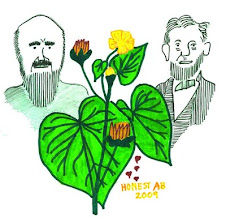I read a most unusual book, Homo Deus, by Yuval Noah Harari, an Israeli historian who is on the Cambridge faculty. It has been a widely-read book in the English speaking world. Many of the author’s assertions are not completely credible, but there was one insight that drew my attention right away. As an historian, the author naturally asked himself and his readers, of what value is history? Why study it, why write about it? Many of you have personal interests in history, perhaps because of where you live or your family history. This is why I write about Cherokee history. But why should anyone be interested in history in general, or other peoples’ histories?
Harari’s answer is simple and powerful. There are many problems of oppression and injustice in the world today. The only way to solve these problems is for us to re-imagine the future, a future in which we will have put these problems behind us. I live in France, and I can see Germany from my window. But not once have I had the slightest fear that a new crop of Nazis will coming marching or sailing over the Rhine. That was what happened eighty years ago, but Europe re-imagined its future, a future without aggression and war. It worked.
And the first step to re-imagining the future is to retell our history. Harari said on page 69, “Movements seeking to change the world often begin by rewriting history, thereby enabling people to reimagine the future.”
And this is what I am doing in my book, now in press and due out in July 2025, Forgotten Landscapes. I will tell you a lot more about it as its publication draws closer.
One major problem in America, often overlooked, is the continued oppression of Native Americans. And one major reason for it is that American culture, in general, dismisses Native American tribes as dirt-colored drunks passed out in the ditch on the Rez in flyover country. This image makes Native American progress sound totally hopeless.
And this image emerges from an historical mythology. One of the dominant, foundational myths of American culture is that Europeans came across the Atlantic and found a continent that was sparsely inhabited by savage hunter-gatherers who hunted deer and gathered nuts and berries, running through the forest and leaving scarcely a footprint behind them. Europeans then took the land, pushing Natives out of the way, but in the end the land was better off for it, even for the Natives. God blessed the Europeans, and the Natives too, by the Manifest Destiny of the United States.
This version of American history is totally and verifiably wrong. Some books (for example, by Dee Brown and Angie Debo) have tried to correct this false image, mostly from the historical viewpoint. My book will also retell the story of Native American history, and tell it accurately, this time including scientific as well as historical information.
North America was not sparsely populated by Natives. It was densely populated. A civilization that was as highly developed as any in Europe or Asia had just collapsed when Columbus came, but the economy of that civilization lived on, in a network of large, healthy villages connected by strong trade networks. These large villages were healthier than the cities of Europe. European soldiers would not have been able to conquer America had it not been for their diseases, which wiped out ninety percent of the Native population. Europeans also conquered Africa and Asia. But today Asia is mostly Asian, and Africa mostly black, while America is mostly white. And the reason for this is epidemic diseases.
Nor were Natives hunter-gatherers who lived on in unaltered wilderness. Natives transformed the entire landscape by the controlled use of fire, burning whole forests and prairies. They controlled animal populations by hunting. They relied upon agriculture, including by means of irrigation and orchards.
I am not the first to write about this, but other books have been lost in the scholarly literature. They include Forgotten Fires by Omer C. Stewart and America’s Ancient Forests by Thomas M. Bonnicksen. My book will be, as far as I am aware, the first time this story about Native transformation of the American landscape has been told for a popular audience.
I provide documentation for all of these things. In this book, I have retold Native American history and got it correct this time. This will be my contribution to a popular rethinking of Native Americans and their ongoing oppression today.
It is equally incorrect to depict Native Americans as having lived in perfect harmony with their environments, something about which numerous books have been published. Natives changed their environments and sometimes degraded them. But the myth of the eco-friendly tribesmen is not a dangerous myth, unlike the primitive-savage myth that dominates American thinking and keeps Native tribes in ongoing repression, poverty, and obscurity.
I hope that my book will have an impact similar to that of Killers of the Flower Moon by David Grann, which revealed how, even in the twentieth century when most white Americans assumed the Indian Wars were over, members of the Osage tribe were murdered so that whites could get their oil rights. Although I cannot hope that Martin Scorsese will make a movie from my book.

No comments:
Post a Comment